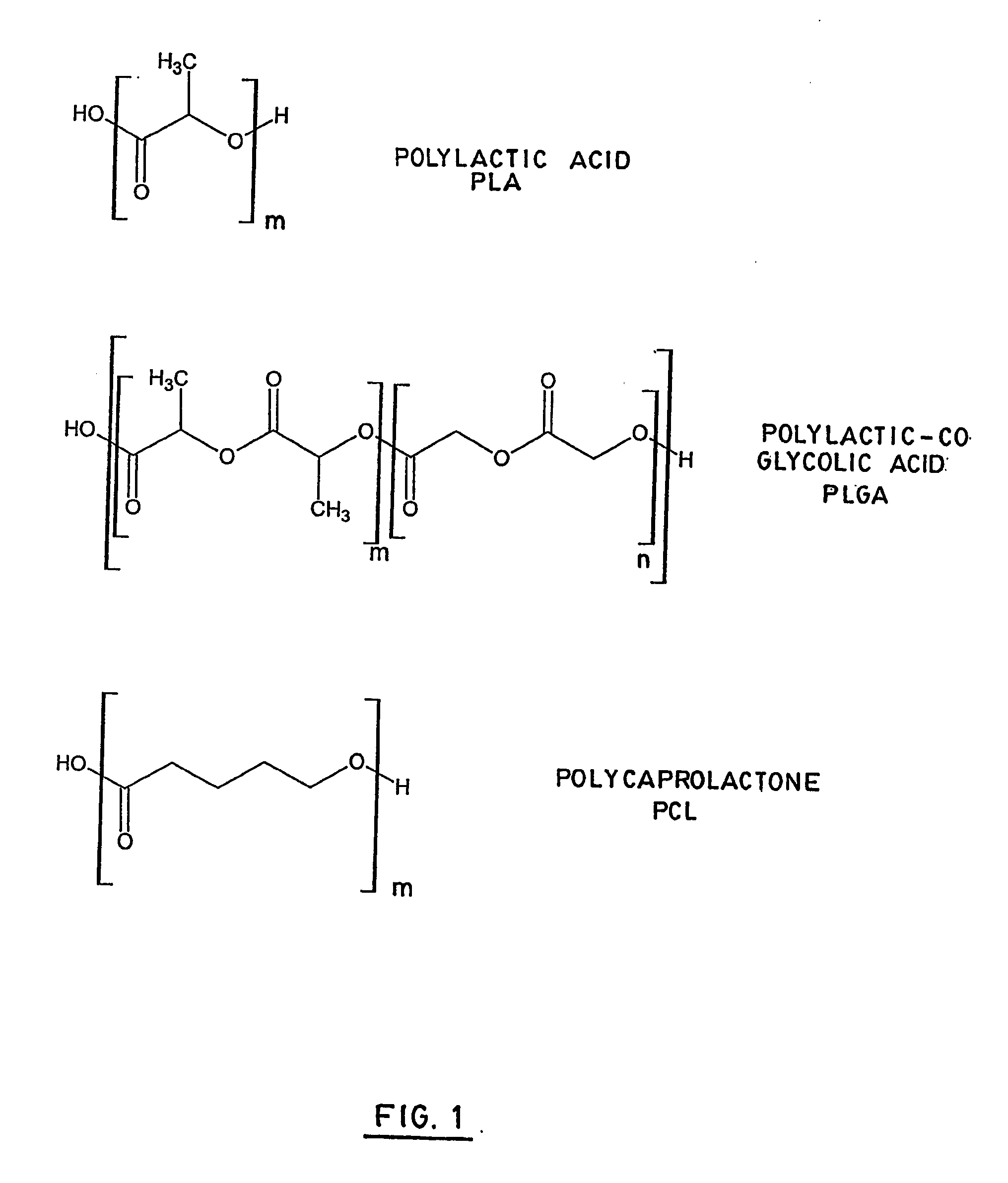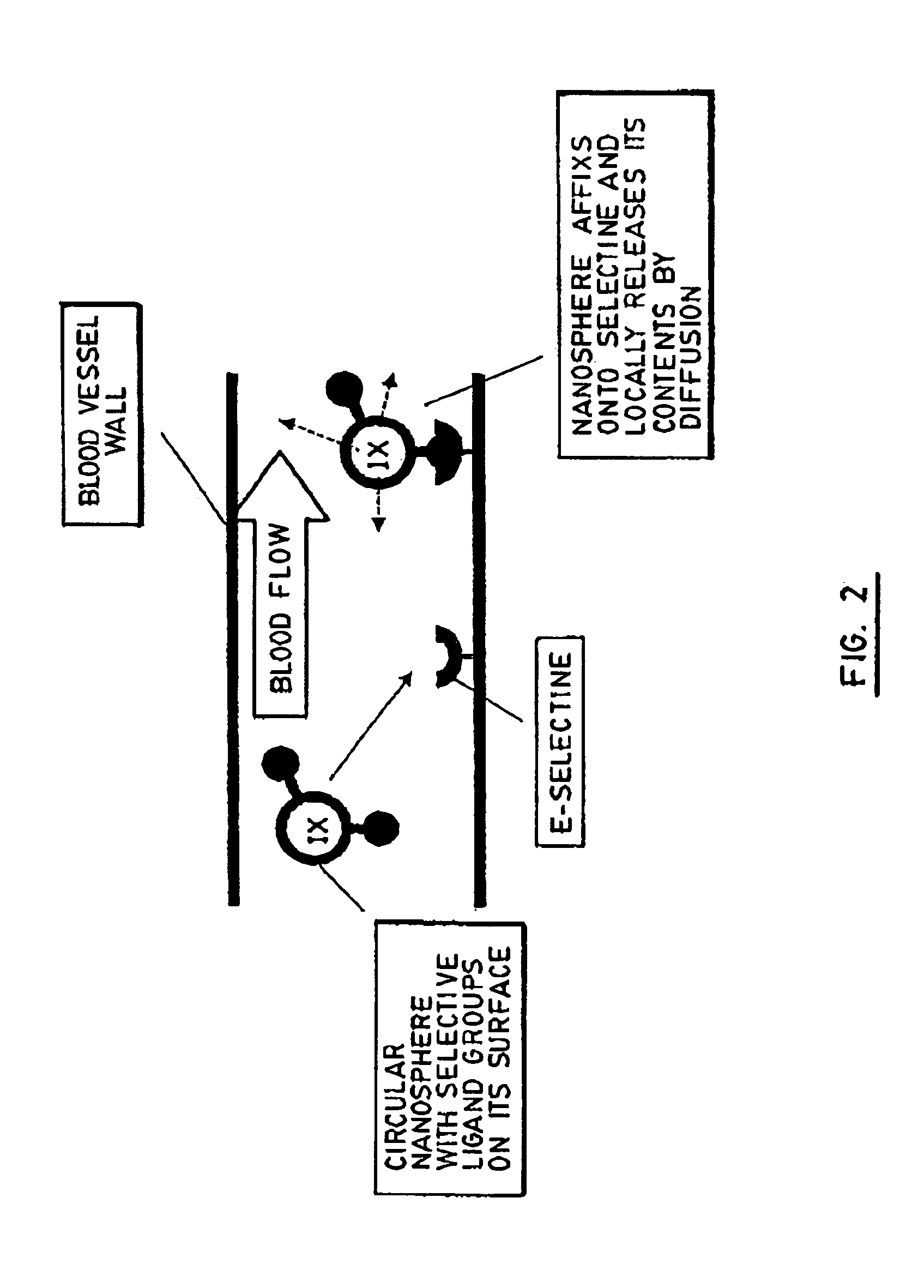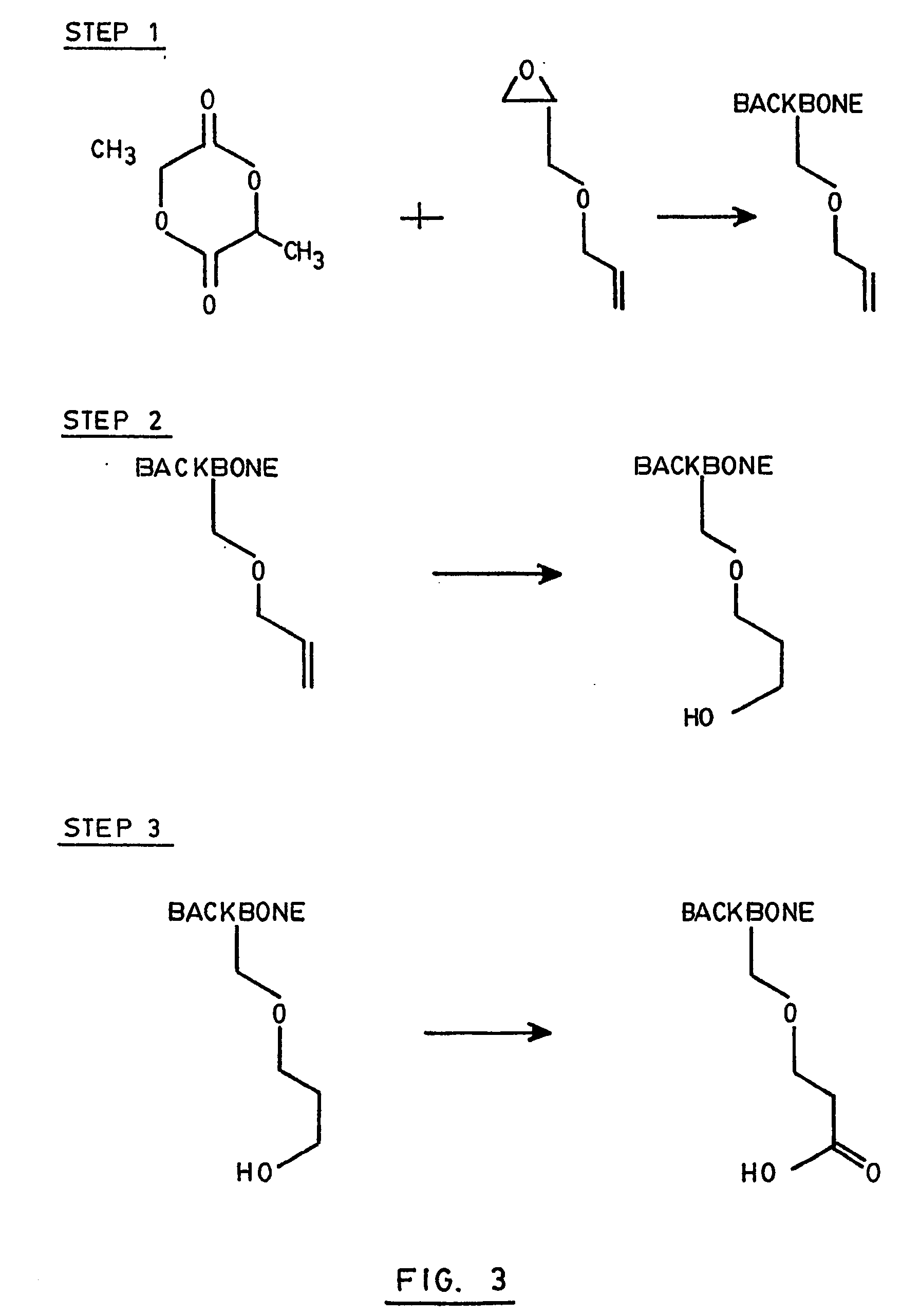Functionalized polymers and their biomedical and pharmaceutical uses
a functionalized polymer and functionalization technology, applied in the direction of granular delivery, etc., can solve the problems of negative zeta potential, high hydrophobicity, unsatisfactory properties, etc., and achieve high yield, easy to use, and interesting structure and properties
- Summary
- Abstract
- Description
- Claims
- Application Information
AI Technical Summary
Benefits of technology
Problems solved by technology
Method used
Image
Examples
example 1
[0088] Dilactide and alkyl glycidyl ether were mixed in a round bottom flask with tetraphenyltin as catalyst. The mixture was heated at 180C for 6 hours. The resulting polymer was dissolved in ethylacetate and purified by precipitation in water.
[0089] The double bonds of the polymer were then oxidized to OH by hydroboration and the OH groups were subsequently converted to carboxylic groups by oxidation with a Jones mixture (H2SO4, CrO3 and H2O).
[0090] The above mentioned hydroboration was carried out with BH3 in tetrahydrofuran at 0° C. for 3 h. Then, water, sodium hydroxide and peroxide were added for 30 minutes. The resulting hydroxylated polymer was recovered by extraction with chloroform.
[0091] The whole process including the three above mentioned steps is illustrated in FIG. 3.
[0092] This process was actually repeated several times with different amounts of allyl glycidyl ether. The global yield of polymer was about 75% in each case.
[0093] The so prepared polymers were the...
example 2
[0096] Using substantially the same conditions of reaction as in example 1, functionalizable polymers were also prepared in using caprolactone, butyrolactone, dioxanone and cyclic diglycine as monomers (A).
example 3
[0097] Some of the functionalizable polymers prepared in Example 1 were used as carriers for a ligand specific to Selectine E. Selectine E is known to be a white cell receptor expressed at the surface of the vascular endothelium in an early stage of adhesion during inflammation.
[0098] Grafting of the ligand to the functionalizable polymers was carried out using the following sequence of steps: [0099] converting the free carboxylic groups of the functionalizable polymer to hydrochloride groups; [0100] protecting all the reactive groups of the ligand; [0101] selectively unprotecting one of said protected groups of the ligand so that it may react with the hydrochloride groups of the functionalizable polymer; [0102] subjecting the partially unprotected ligand and the functionalizable polymer to esterification; and [0103] unprotecting all the other reactive groups of the grafted ligand by catalytic hydrogenation.
[0104] The obtained functionalized polymer had the following formula:
[01...
PUM
| Property | Measurement | Unit |
|---|---|---|
| molar ratio | aaaaa | aaaaa |
| temperature | aaaaa | aaaaa |
| Tg | aaaaa | aaaaa |
Abstract
Description
Claims
Application Information
 Login to View More
Login to View More - R&D
- Intellectual Property
- Life Sciences
- Materials
- Tech Scout
- Unparalleled Data Quality
- Higher Quality Content
- 60% Fewer Hallucinations
Browse by: Latest US Patents, China's latest patents, Technical Efficacy Thesaurus, Application Domain, Technology Topic, Popular Technical Reports.
© 2025 PatSnap. All rights reserved.Legal|Privacy policy|Modern Slavery Act Transparency Statement|Sitemap|About US| Contact US: help@patsnap.com



